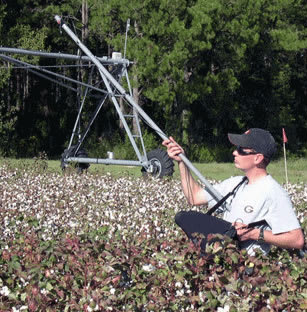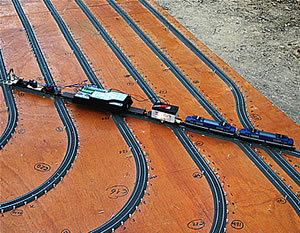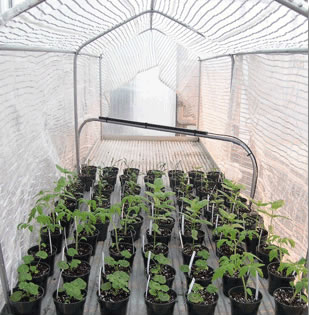|
Dr. Glen Ritchie of the University of Georgia has used model PS-100 spectroradiometer to take reflectance measurements in cotton fields and estimate defoliation. Chlorophyll gives plant leaves a reflectance spectrum characteristically different from that of soil. Reflectance measurements can be reported in µmol m-2 s-1, W m-2, or as a relative value. View poster presented at ASA meeting.
|
|
18 January 2017
Reflectance Measurements in Cotton Fields
12 January 2017
Irrigation Study
|
Dr. Joan Girona of the Institute of Agroalimentary Research and Technology in Catalonia, Spain, is studying irrigation and the water and nutrient needs of fruit trees. He needed to capture pyranometer readings throughout his orchard. Dr. Girona mounted Apogee pyranometer sensors and Campbell Scientific dataloggers on a carefully laid out model train track around the orchard. The train carrying the pyranometer sensors and dataloggers wound around the track and could take measurements at specified intervals. Dr. Girona could then take thousands of measurements. His system was so effective he plans to continue running it for more experiments in the future. Learn more about Dr. Girona’s experiment by reading the original article on Campbell Scientifics’ website.
|
|
06 January 2017
Controlling Flowering of Orchids in Greenhouse
|
Dr. Erik Runkle of Michigan State University used the SQ-313 line quantum sensor mounted on a cross bar (as shown below) in greenhouse experiments controlling the flowering of Phalaenopsis Orchids. In the experiment the SQ-313 was used to measure photosynthetic photon flux and the daily light integral at plant height for both natural and electric light sources, while temperature was experimented with to control flowering. For the complete journal article of the experiment, click here.
|
|



